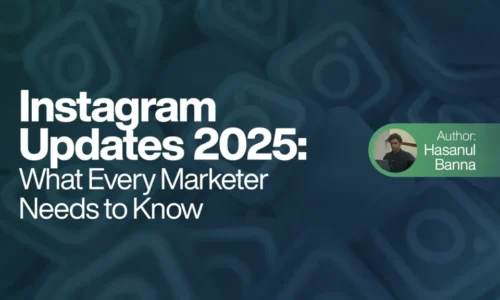Understanding Marketing: Through a Hypothetical Example
Starting a business never assures you any profits. The journey from setting up a business to generating sales isn’t as simple as producing a product or service and putting it on the market. Business success requires a strategic approach, especially in marketing. Let’s dive into the essentials of marketing through a hypothetical example that explains how you can transform an idea into a profitable venture.
Table of Contents
What If You Are Starting a New Business?
Imagine you are venturing into the food industry. It could be a restaurant, cafe, bakery, or tea shop. The choice of what to start depends on several factors: your budget, expertise, resources, and the potential revenue from each market segment. But, even if you’ve identified these aspects, just having a product or service won’t guarantee sales. Why? Because you need more than just a good product—you need to communicate its value effectively and stand out in a crowded marketplace. Let’s go through the process now.
Step 1: Identify Your Target Market
The Role of Location
For our example, let’s assume you’ve chosen to open a cafe. Location is crucial. Imagine selecting a spot near a college campus. Your target customers are predominantly students and hostellers. Why? Because they’re likely to spend time outside their hostels, looking for affordable yet enjoyable dining experiences.
Analyzing the Micro-Environment
Next, you need to analyze your immediate surroundings, often referred to as your micro-environment. Who are your competitors? What do they offer? In this case, nearby restaurants primarily serve regular meals in a somewhat congested setup at a similar price range. This analysis reveals a gap in the market: a lack of affordable, premium cafe options.
Defining the Gap
By identifying this gap, you decide to position your cafe as a slightly premium alternative to traditional restaurants. Students might pay a bit more, but they’ll enjoy better quality food, a diverse menu (including café-style options), and a more comfortable ambiance. This strategic differentiation sets the foundation for your business.
Step 2: Build Your Offering
Product, Place, Price, and Promotion
With your target market in mind, you need to develop the 4 Ps of marketing:
- Product: You curate a menu that appeals to students—cafe staples like sandwiches, pastries, and specialty beverages, along with alternatives to traditional meals.
- Place: Your cafe is located near colleges, ensuring foot traffic from your target audience.
- Price: Pricing is slightly higher than regular restaurants but still within reach for students, ensuring a balance between premium quality and affordability.
- Promotion: This is where creativity comes into play. But before diving into promotional activities, you must define how you want customers to perceive your café.
Step 3: Craft Your Positioning Strategy
Define Your Identity
Positioning involves deciding how you want your brand to be perceived. In this case, you position your cafe as a place offering better quality food, a joyful ambiance, and an ideal hangout spot for students.
Establish Branding
- Logo and Colors: A vibrant, youthful color scheme that appeals to students.
- Decor: Comfortable seating, Instagram-worthy interiors, and an inviting atmosphere.
- Membership Programs: Discounts or rewards for loyal customers.
- Events: Hosting student-oriented events like open mic nights or game nights to build a community around your cafe.
- Quality and value-focused Promotions: Social media marketing and other promotions focusing on premium quality and value.
Step 4: Communicate Your Value
Advertising and Social Media
- Social Media Marketing (SMM): Platforms like Instagram, Facebook, and TikTok are ideal for showcasing your cafe. Share pictures of your menu items, host contests, and engage with your audience through polls and stories.
- Paid Ads: Localized ads on social media can help you reach nearby students and residents.
Word-of-Mouth and Influencers
- Student Ambassadors: Partner with popular students to promote your cafe among peers.
- Micro-Influencers: Collaborate with local food bloggers to showcase your offerings to a broader audience.
Step 5: Enhance the Customer Experience
Loyalty Programs and Offers
- Free Delivery: Provide free delivery services for nearby hostels and residential areas.
- Discounts: Offer discounts on birthdays or during festival seasons, showing you understand your customers’ needs.
- Exclusive Offers: Create student-only deals to foster a sense of exclusivity.
Partnerships
Step 6: Monitor, Adapt, and Evolve
- If foot traffic is lower than expected, consider running special campaigns like “Happy Hours” with discounted prices.
- If your menu isn’t clicking, tweak it based on customer preferences, such as adding more vegetarian or vegan options.
Then comes the role of Marketing Funnel. Designing customer interaction throughout every stage of the customer path, that is, the “Aware, Appeal, Appeal, Act, and Advocate” stage(evolved from the Awareness, Consideration, Conversion, and loyalty model). An alternative for this model will be the “Stranger, Visitor, Lead, Customer and Promotion” model of customer path.
Why Marketing Matters
By following these steps, your cafe won’t just be another eatery near a college—it’ll become a preferred destination, known for its quality, ambiance, and connection with its customers. That’s the power of a well-executed marketing strategy!
Marketing isn’t an optional part of running a business—it’s the bridge between your product and your customers. With the right approach, even a small cafe near a college can thrive in a competitive environment
Author Info
Mohammed Salih PP, a Business Consultant in Kerala.
Learner of CDA Digital Marketing Academy in Kerala.



